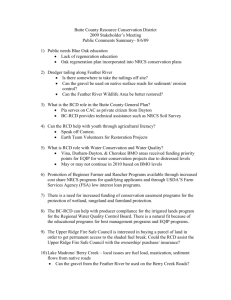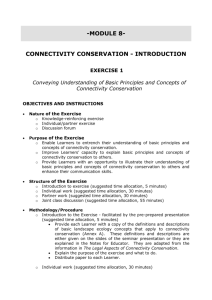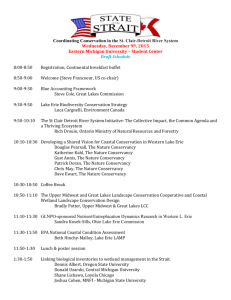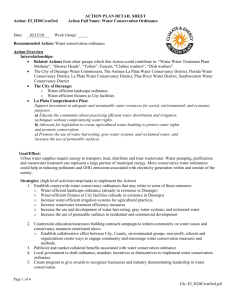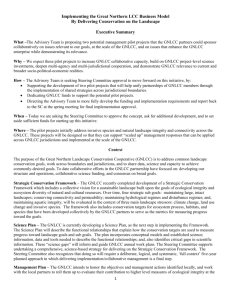full essay
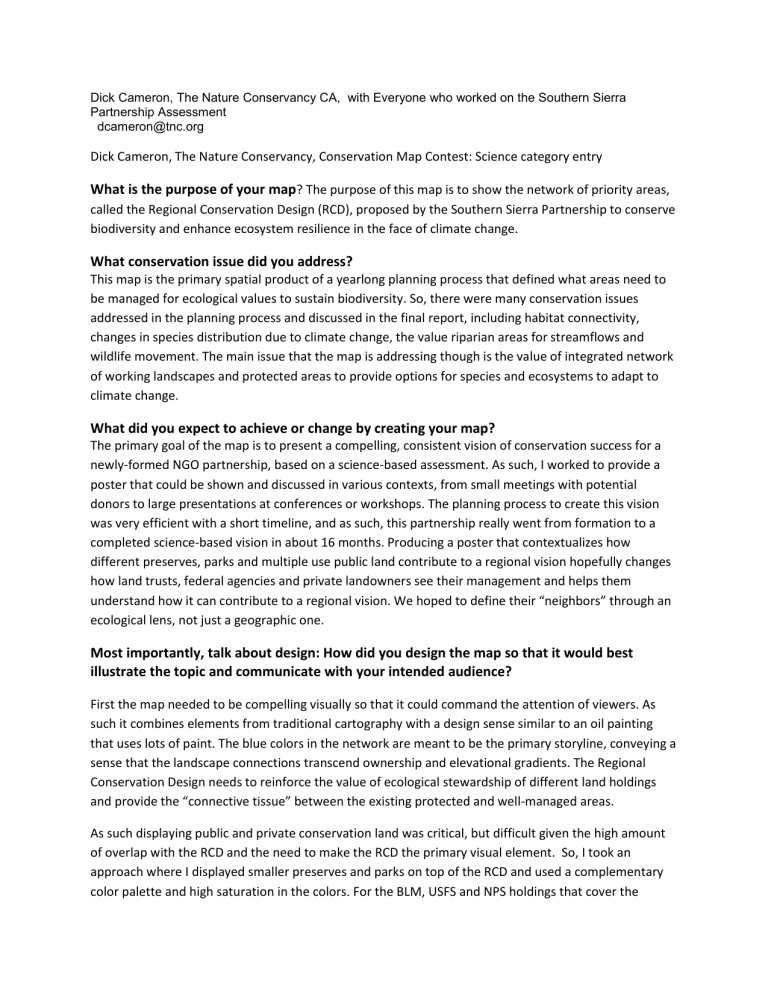
Dick Cameron, The Nature Conservancy CA, with Everyone who worked on the Southern Sierra
Partnership Assessment
dcameron@tnc.org
Dick Cameron, The Nature Conservancy, Conservation Map Contest: Science category entry
What is the purpose of your map
? The purpose of this map is to show the network of priority areas, called the Regional Conservation Design (RCD), proposed by the Southern Sierra Partnership to conserve biodiversity and enhance ecosystem resilience in the face of climate change.
What conservation issue did you address?
This map is the primary spatial product of a yearlong planning process that defined what areas need to be managed for ecological values to sustain biodiversity. So, there were many conservation issues addressed in the planning process and discussed in the final report, including habitat connectivity, changes in species distribution due to climate change, the value riparian areas for streamflows and wildlife movement. The main issue that the map is addressing though is the value of integrated network of working landscapes and protected areas to provide options for species and ecosystems to adapt to climate change.
What did you expect to achieve or change by creating your map?
The primary goal of the map is to present a compelling, consistent vision of conservation success for a newly-formed NGO partnership, based on a science-based assessment. As such, I worked to provide a poster that could be shown and discussed in various contexts, from small meetings with potential donors to large presentations at conferences or workshops. The planning process to create this vision was very efficient with a short timeline, and as such, this partnership really went from formation to a completed science-based vision in about 16 months. Producing a poster that contextualizes how different preserves, parks and multiple use public land contribute to a regional vision hopefully changes how land trusts, federal agencies and private landowners see their management and helps them understand how it can contribute to a regional vision. We hoped to define their “neighbors” through an ecological lens, not just a geographic one.
Most importantly, talk about design: How did you design the map so that it would best illustrate the topic and communicate with your intended audience?
First the map needed to be compelling visually so that it could command the attention of viewers. As such it combines elements from traditional cartography with a design sense similar to an oil painting that uses lots of paint. The blue colors in the network are meant to be the primary storyline, conveying a sense that the landscape connections transcend ownership and elevational gradients. The Regional
Conservation Design needs to reinforce the value of ecological stewardship of different land holdings and provide the “connective tissue” between the existing protected and well-managed areas.
As such displaying public and private conservation land was critical, but difficult given the high amount of overlap with the RCD and the need to make the RCD the primary visual element. So, I took an approach where I displayed smaller preserves and parks on top of the RCD and used a complementary color palette and high saturation in the colors. For the BLM, USFS and NPS holdings that cover the
montane regions, I backgrounded those lands and used a much lighter set of colors and a higher transparency. Yet, it is important that the boundaries and patterns of ownership (e.g. consolidated vs. checkerboard) are displayed, so I used two elements to represent the boundaries, making them both clear, but secondary in the visual design. I used a wider transparent line weight to “highlight” a thin strong line. Both lines for each ownership used a similar, yet more saturated color as the fill for the lands, making the association between them easy for the map viewer.
The third theme I wanted to represent was the diversity of land uses and steep elevation gradients. To do this, the base of the map is a combination of a satellite image, a DEM and a smoothed, simplified hillshade. As this was a supporting message it is very subtle and only draws the eye in a few places. The agricultural land uses in the San Joaquin Valley to the west are apparent but in a very subtle way.
Labeling was used to orient the map reader and recognize existing conservation. That is why I chose to use so many small place name labels. This was a challenge with such a visually rich map, but works well at the original print size. Also, larger preserves in the foothills were labeled to recognize the substantial conservation work achieved already in a challenging region and to provide a reference for the various
NGOs that were a part of the Southern Sierra Partnership that would want to contextualize their work in the larger region.
Science—Describe the scientific concepts or challenges that you addressed in making your map.
Imagine that you are submitting to a journal or giving a paper at an academic conference, but make your description accessible. Please note that by science, we mean any well-defined discipline in the classical sense, so maps having to do with issues in social science, political science, cognition, perception, and cartographic design are just as valid as maps dealing with issues in the natural sciences. Whatever your area of science, your essay needs to describe your topic and how you solved it in a precise, scientific manner.
Connectivity across habitats and ecosystems is a critical conservation goal in the face of both land use and climate change. Scientists project that many species’ distributions will respond to climate change by shifting to areas with more suitable climate. Those movements, or range shifts, are constrained by past land use conversion as well as future changes. The spatial dimensions of connectivity are just as diverse as its role in maintaining species viability and ecosystem functionality. At fine spatial scales, mobile species move at daily and seasonal frequency to forage, breed, and find cover. River systems access former channels, nearby wetlands and floodplains during storms and seasonally. At broader time and space scales, the distribution of a species might mover uphill to adjust to higher temperatures in its current range, or juvenile wide ranging species might disperse from their natal range to set up a new home range. Disturbance regimes such as wildfire in the forests of the region historically operated over large areas, creating a mosaic of plant communities that changes connectivity for plants and animals over time.
This map is meant to convey the sense that to have resilient ecosystems in the face of future change we need to design our conservation actions to contribute to connectivity at a much broader scale. Our
hypothesis is that this is necessary to enable adaptation of species to climate change. The study and the map bring together the current conservation context (existing parks and public lands) and a vision for its future viability.









